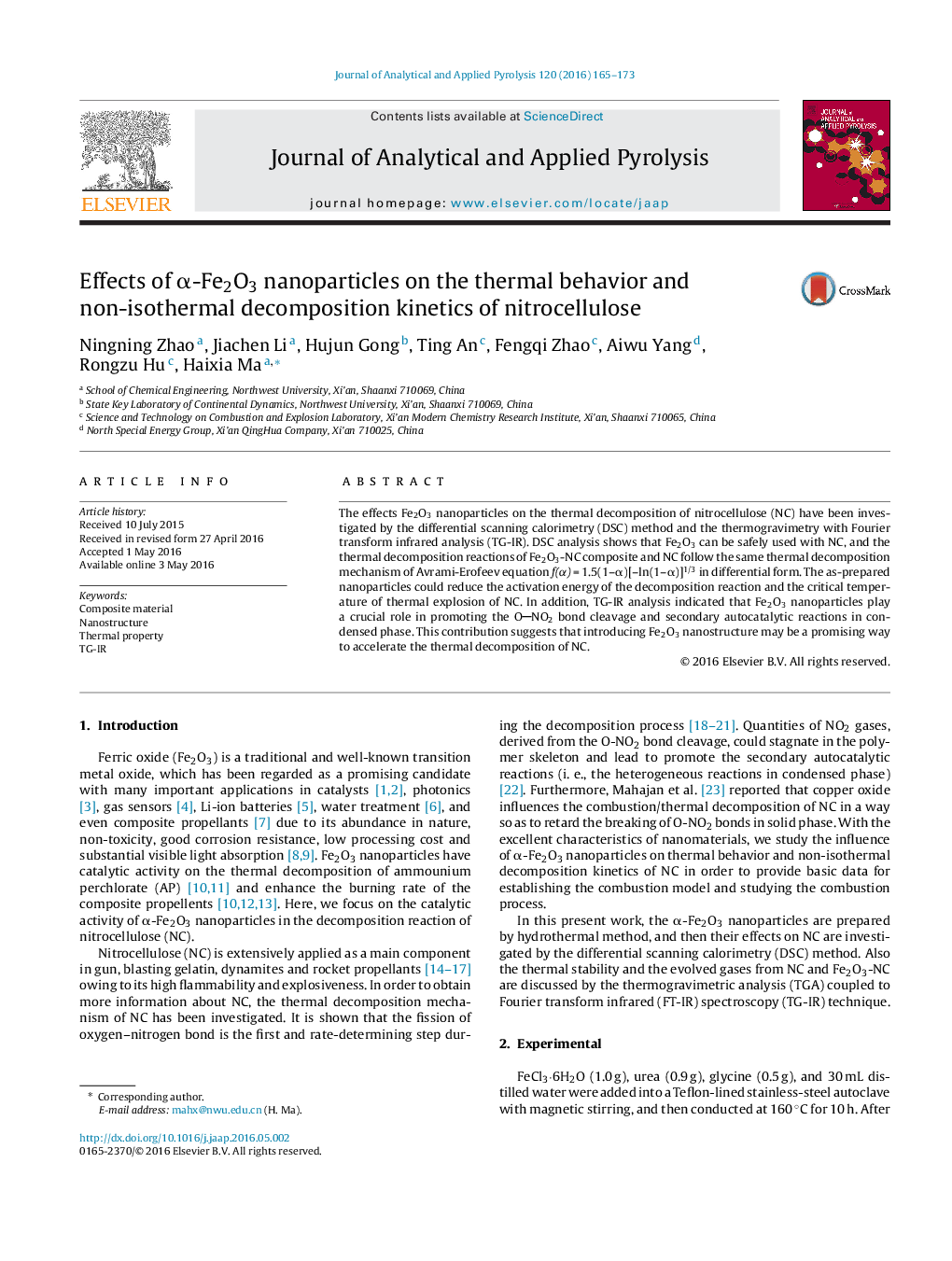| Article ID | Journal | Published Year | Pages | File Type |
|---|---|---|---|---|
| 1196539 | Journal of Analytical and Applied Pyrolysis | 2016 | 9 Pages |
•Fe2O3 nanoparticles were prepared by hydrothermal method.•Effects of Fe2O3 nanoparticles on the thermal decomposition of NC are studied upon DSC data.•Thermal behaviors and the gases evolved from the degradation of NC and Fe2O3-NC are investigated with a TG-IR technique.
The effects Fe2O3 nanoparticles on the thermal decomposition of nitrocellulose (NC) have been investigated by the differential scanning calorimetry (DSC) method and the thermogravimetry with Fourier transform infrared analysis (TG-IR). DSC analysis shows that Fe2O3 can be safely used with NC, and the thermal decomposition reactions of Fe2O3-NC composite and NC follow the same thermal decomposition mechanism of Avrami-Erofeev equation f(α) = 1.5(1–α)[–ln(1–α)]1/3 in differential form. The as-prepared nanoparticles could reduce the activation energy of the decomposition reaction and the critical temperature of thermal explosion of NC. In addition, TG-IR analysis indicated that Fe2O3 nanoparticles play a crucial role in promoting the ONO2 bond cleavage and secondary autocatalytic reactions in condensed phase. This contribution suggests that introducing Fe2O3 nanostructure may be a promising way to accelerate the thermal decomposition of NC.
